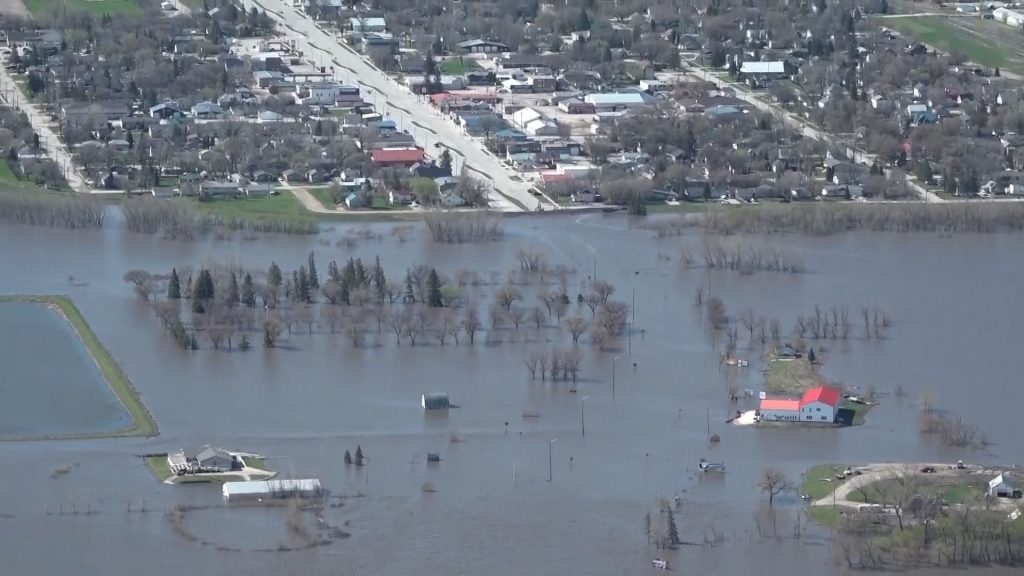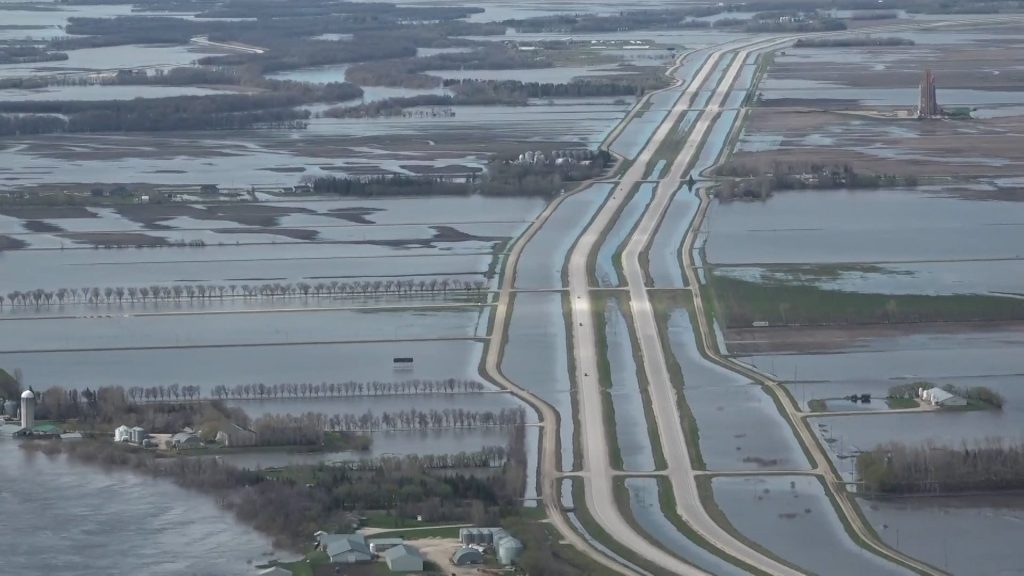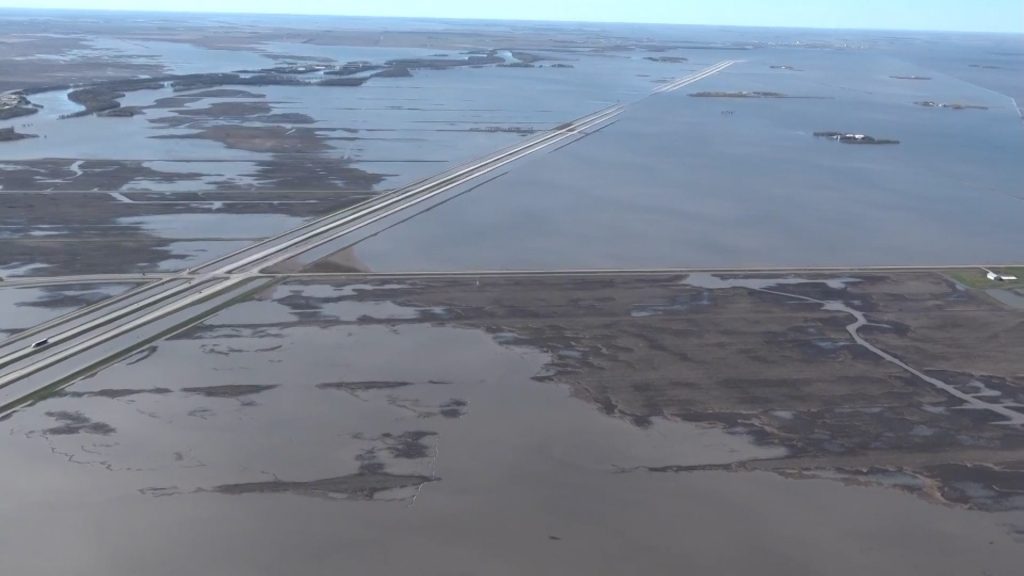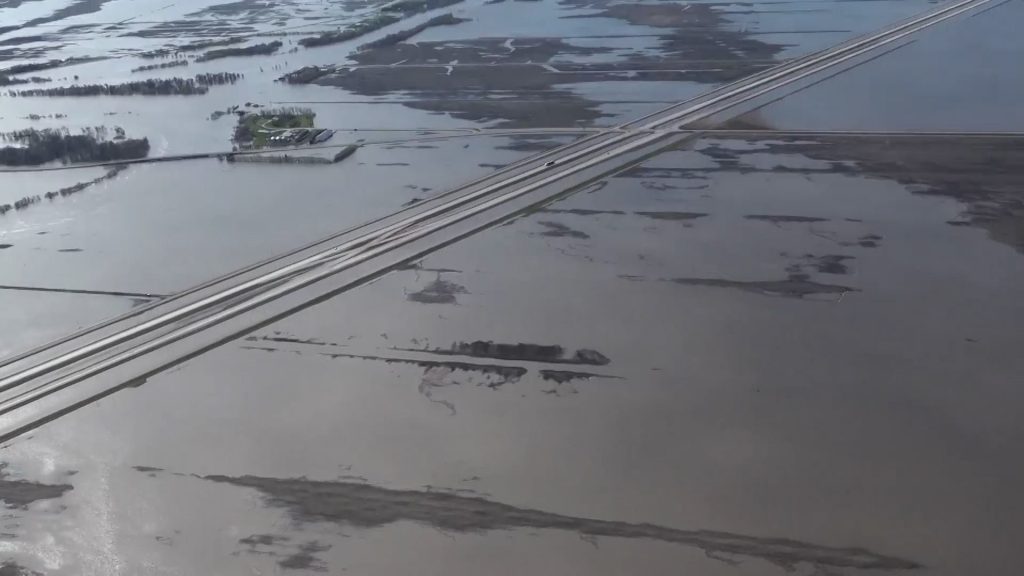Manitoba exploring new investment for flood mitigation as aerial tour shows water receding in areas

Posted May 15, 2022 4:31 pm.
Last Updated May 15, 2022 5:12 pm.
The Manitoba government says it is exploring new investment options for flood mitigation in the future, after the premier and top officials took a helicopter tour of many areas affected by flooding across the province on Sunday.
While water was beginning to recede or cresting in many areas, officials say more investment is needed to improve infrastructure to prevent flood damage.
Premier Heather Stefanson, Transportation and Infrastructure Minister Doyle Piwniuk and Johanu Botha, the head of Manitoba’s emergency management organization, were part of the helicopter tour. They were joined by Opposition Leader Wab Kinew.
Flooding has seriously impacted Manitoba since early April when a combination of a Colorado Low weather system, spring melt and steady rainfall led to river levels rising and mass overland flooding. Several thousands needed to evacuate their home.
A flood warning is still in effect for the Winnipeg River and Whiteshell areas.
Flooding continues in parts of the Interlake, Red River Valley and other areas of central and southern Manitoba.

Nearly 2,500 Manitobans still evacuated
The province says there remains 446 municipal evacuees who have not been able to return home, as well as just under 2,000 First Nation evacuees.
That figure has remained steady for the past few days.
Sunday’s aerial tour, which began at 10 a.m., took the government officials down Highway 75 and the Red River over Saint Adolphe, Ste. Agathe, Morris and around the Emerson Area.
Premier Stefanson noted the water level was receding in Emerson, and cresting in the Saint Adolphe area.



The helicopter tour took them to Peguis First Nation, down the Icelandic River, over Gimlee and north of Lockport, where the floodway enters the Red River.
Stefanson’s impression in Peguis was that the water had receded significantly since the last time she was there two weeks ago.
RELATED: Flooded Peguis First Nation wants permanent infrastructure for protection
Piwniuk said more funding from the federal government was needed for Peguis, adding there was still a lot of cleanup needed to be done before people could return to their communities.
“It was a very informative tour for all of us,” said Manitoba’s premier.

Manitoba farmland still under water
Stefanson did note there was still a lot of water on farmland across the province. She says there will be more discussion with respect to challenges some of the farmers are facing.
“We will be with you every step of the way,” she said of the farmers. “We will continue to help them through various programs.
“We’re hoping we can get some decent weather… so that famers can get into their fields.”
Piwniuk said he hoped farmers could start working their fields by early June.
READ MORE: Manitoba government announces disaster aid relief as flood worries continue
He pointed to the government’s Disaster Financial Assistance (DFA) program as a way for municipalities and individuals to receive compensation help following flooding.
Though no concrete investment proposals were put forth, the province did say the idea of elevating Highway 23 – which goes through Morris and is already being worked on – could be interesting.
Kinew said he was thankful for the invitation on the aerial tour of the province as it showed Manitobans their politicians could work together in a time of need.
“The water level that we see is beyond what an individual or community can deal with on their own,” he added. “It’s government that needs to step up.”








